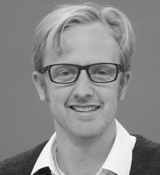By: Rob Hoehn
Even if your organization doesn’t yet have an embedded innovation program, I can guarantee that your organization cares about finding opportunities for savings. That’s why programs like LEAN and Six Sigma continue to do so well. There are always new ways to improve efficiency and time saved almost always means money saved.
It’s also one of the most predictable places where innovation practitioners can see an immediate return on their efforts. In this Harvard Business Review article about the different innovation horizons within an innovation program, they note that most innovation programs focus 70% of their efforts on incremental change and 20% on adjacent programs and only 10% on transformational. However, the return on those programs is directly inverse (with only 10% growth attributed to incremental change and 70% growth attributed to successful transformational initiatives). This is one of the reasons that we recommend to our customers that they focus the first six months on incremental improvements and then re-investing their 10% return on exploring some transformational ideas that could yield even higher returns.
However, sometimes incremental change is the best way to drive towards new results and the best way to prove the value of crowdsourcing. For example, in 2016, NYU’s 16th President, Andrew Hamilton, made clear that he would carry forward a commitment to make NYU more affordable for more students. As part of that commitment, President Hamilton established the Affordability Steering Committee and the Affordability Working Group to create a structure for engagement and consultation across the NYU community. They launched a crowdsourcing initiative that asked the entire campus community for opportunities for savings and ideas that would help them reduce costs. They asked for ideas continuously across a number of channels and reported findings and implemented ideas on a Medium blog and were able to save NYU students millions. This initiative not only generated results, it showed the potential wealth of collective knowledge that the campus has access to when it comes to solving their problems and planning for the future.
This is a model that we’d recommend using in order to gain traction for your early-level programs: find an efficiency problem that you’d like to solve and ask the crowd for ideas. Deliver on some initial quick-wins right away and expand the range of your problem-solving capability. After all, who doesn’t want to save a little money?
To learn more about the NYU crowdsourcing affordability initiative, download the case study here.
By Rob Hoehn
About the author
 Rob Hoehn is the co-founder and CEO of IdeaScale: the largest open innovation software platform in the world. Hoehn launched crowdsourcing software as part of the open government initiative and IdeaScale’s robust portfolio now includes many other industry notables, such as EA Sports, NBC, NASA, Xerox and many others. Prior to IdeaScale, Hoehn was Vice President of Client Services at Survey Analytics.
Rob Hoehn is the co-founder and CEO of IdeaScale: the largest open innovation software platform in the world. Hoehn launched crowdsourcing software as part of the open government initiative and IdeaScale’s robust portfolio now includes many other industry notables, such as EA Sports, NBC, NASA, Xerox and many others. Prior to IdeaScale, Hoehn was Vice President of Client Services at Survey Analytics.
Featured image via Yayimages.

